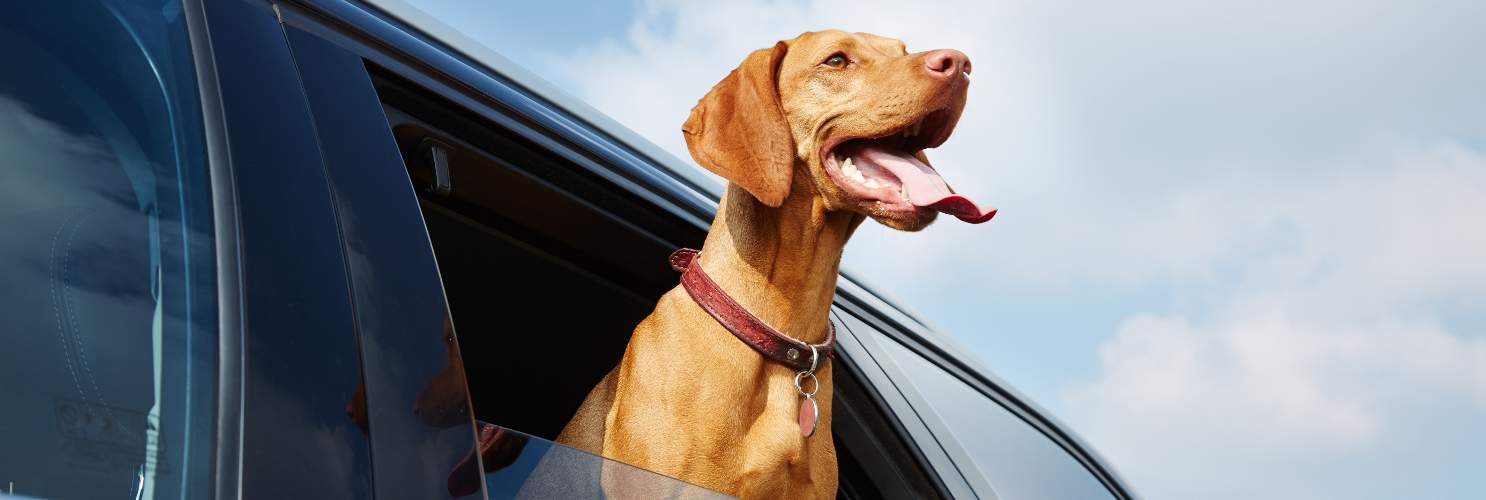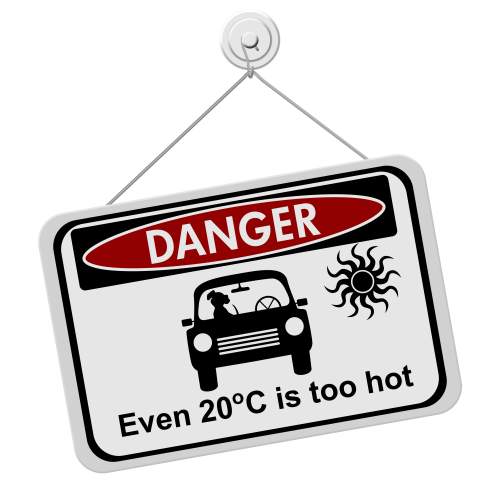
8 simple tips for bathing your dog at home
Like humans, doggies can get smelly. Sweat, muck and all the rest – so bathing your dog is a necessity. But it’s not a...
10 January 2018
Read More
Dogs in hot cars die every year in the UK. Often those dogs belong to otherwise responsible dog owners, who may return to their car after leaving their dog for ‘just a few minutes’ only to find that their best friend has suffered terribly – or even died. Those same owners are not only left devastated by their loss, but may also face prosecution for animal cruelty.
Many people believe that you can leave a dog in a car on a cool day, or that their dog will be okay if a window is left open or air conditioning is switched on. Indeed, according to the AA, around 1 in 5 dog owners admit to leaving their dog in a car for more than 20 minutes.
Yet there is no safe temperature to leave a dog in a car. Even on a cool day, the temperature inside the car can quickly rise as the metal bodywork absorbs the heat from the sun. Even if left open, windows act like glass in a greenhouse, allowing heat inside the car and trapping it there.
Appeals to stop people from leaving their dogs in hot cars tend to be most prevalent during the spring and summer months, but at any time of the year, the temperature inside a car can become too high, causing distress, heatstroke and even death to any dog left inside.

Even 20⁰ is an unsafe temperature to leave your dogs in hot cars
As soon as the car door closes, the temperature inside will begin to climb. Even if the car is parked in the shade, or has a window open, the temperature can increase considerably in a very short amount of time. Many people do not appreciate, for example, that if the temperature outside the car is 22 degrees, it can soon reach 47 degrees inside the car – a dog’s normal body temperature is around 38-39 degrees Celsius, and a body temperature of 41 degrees or higher can be fatal. In less than 20 minutes, a dog can die of heat exhaustion.
As the temperature inside the car rises, a trapped dog will begin to pant excessively and may whimper or bark. Some may scramble around the car, desperately seeking somewhere cooler. Sadly, even if a dog is rescued at this point it may have suffered from brain injury that ultimately proves fatal. If left for longer, the dog will almost certainly die, as its vital organs will fail.
A dog suffering from heatstroke may have the following symptoms and must be helped immediately:
If a dog is suffering from heatstroke, it must receive emergency veterinary care without delay, and you should administer first aid (by taking it somewhere cool, gently dowsing it with cool water and allowing it to drink cool water) until professional help can be delivered.

The law on dogs in hot cars in the UK is clear: if a person leaves a dog in a car and that dog is distressed, suffers ill health or dies as a result, that person can be prosecuted for animal cruelty. This is a criminal offence under the Animal Welfare Act 2006 and if found guilty, the perpetrator will face a fine of up to £20,000 and up to six months in jail. A person who rescues a dog that is suffering in a hot car can be excused from causing damage to the vehicle if it was necessary to save the dog’s life (see below).
It can be very distressing to see a dog trapped in a vehicle, and as a passer by, you might be unsure of what you can or should do to help. It is therefore important to be clear about what the law says in order to do what you can without putting yourself at risk of prosecution.
If a dog appears to be suffering from heatstroke, you can and should:
If the police will take too long to arrive or will not attend, you can break a window to rescue the dog but only if it is suffering. To protect yourself against prosecution for criminal damage:
You may then rely on the defence under s5(2)(a) Criminal Damage Act 1971 because you believed that if the person who owned the car knew of the circumstances (i.e. that their dog was suffering), they would allow you to break the window to help.
If the dog is not suffering from any obvious signs of heatstroke, you should not attempt to rescue it. Instead, you could make a note of the registration number of the car and make a complaint to the police (on a non-emergency number). Take a note of any relevant information (e.g. time and location), details of any witnesses and make photographic or video evidence. Try to find the owner if you can, or stay with the dog until the owner returns.
Be observant, save a life
Sign up to our newsletter today
Sources:
http://www.theaa.com/newsroom/news-2015/dogs-in-cars-aa-dogs-trust.html
https://www.dogstrust.org.uk/news-events/blog/keeping-your-dog-safe-this-winter
https://www.rspca.org.uk/adviceandwelfare/pets/dogs/health/dogsinhotcars
https://www.themotoringlaw.uk/leaving-dogs-in-the-car-law/

Like humans, doggies can get smelly. Sweat, muck and all the rest – so bathing your dog is a necessity. But it’s not a...
10 January 2018
Read More
As we all know, Christmas is a time for the whole family, and in dog-friendly households that includes our beloved furry friends. ...
21 December 2017
Read More
If winter is hard on us humans, imagine how uncomfortable it can be for our canine companions when going for walks. While we get t...
17 October 2017
Read More